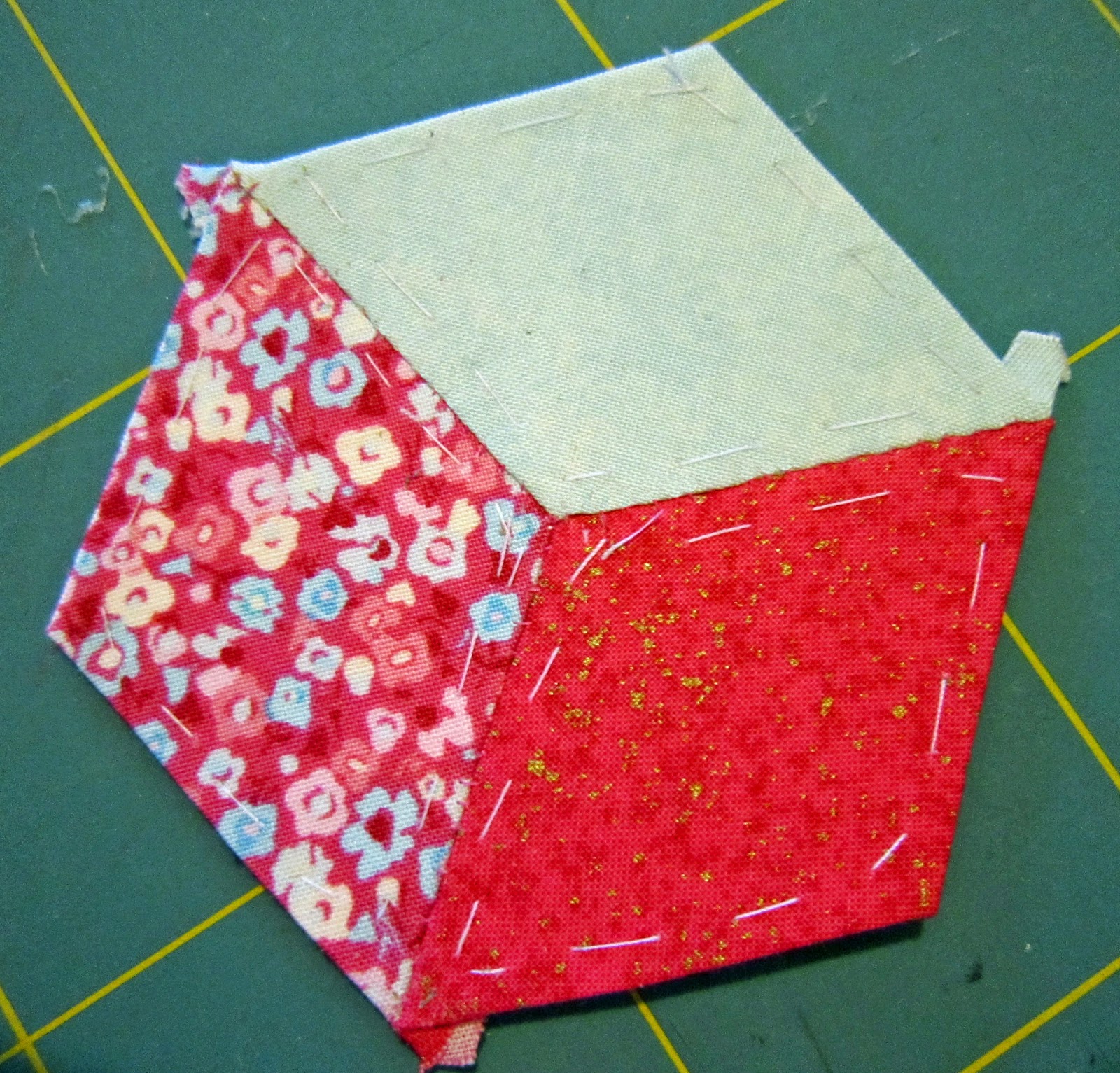 Now for some traditional quilting. Patchwork over papers is a traditional English method most often used with hexagon shapes.
Now for some traditional quilting. Patchwork over papers is a traditional English method most often used with hexagon shapes.We are using diamond shapes for this block but you will see that when the three diamond shapes are sewn together they actually create a hexagon which looks like a baby's toy block.


 To achieve the right result the block has to be created from fabric with dark, medium and light values.
To achieve the right result the block has to be created from fabric with dark, medium and light values.We have to make a diamond shaped template to start with and this can be made from card or from template plastic.
Copy the diamond shape from your circulated email to make the template then use it to copy the shape eighteen times on to cartridge paper.
Cut out the shapes and pin them on the straight grain to the wrong side of the fabric pieces - six shapes to each of the three pieces. Leave enough space between them to allow for a 1/4" seam all around.
 Cut them out roughly at first and then use your quilter's quarter or other measuring equipment to draw a 1/4" seam all around and cut them out accurately snipping the ends off the long points to a 1/4".
Cut them out roughly at first and then use your quilter's quarter or other measuring equipment to draw a 1/4" seam all around and cut them out accurately snipping the ends off the long points to a 1/4".When they are all cut out fold the edges of the fabric tightly over the paper and tack down. Don't worry about the seam allowance overlap at the long pointed corners as this will be hidden later when the blocks are joined together.
In this photo you can see some diamonds pinned and cut out and others already tacked and pins removed.

 The next part is to place one of each colour into a box shape and join the pieces right sides together with a neat small oversew stitch using a thread colour which will not show.
The next part is to place one of each colour into a box shape and join the pieces right sides together with a neat small oversew stitch using a thread colour which will not show.Make sure the corners match up and as you sew from one of the corners put a pin in the other end to keep the corners together and matching.
After joining the edges together press on both sides and press the little 'ears' down neatly in the same way that they folded when you tacked them down. later these will dovetail together when joined to another block.
Make up the six blocks in the same way.
The tacking and papers stay in the blocks for the time being.

The next stage will be to join them together and then applique them as a group to the background.
To be continued.
No comments:
Post a Comment